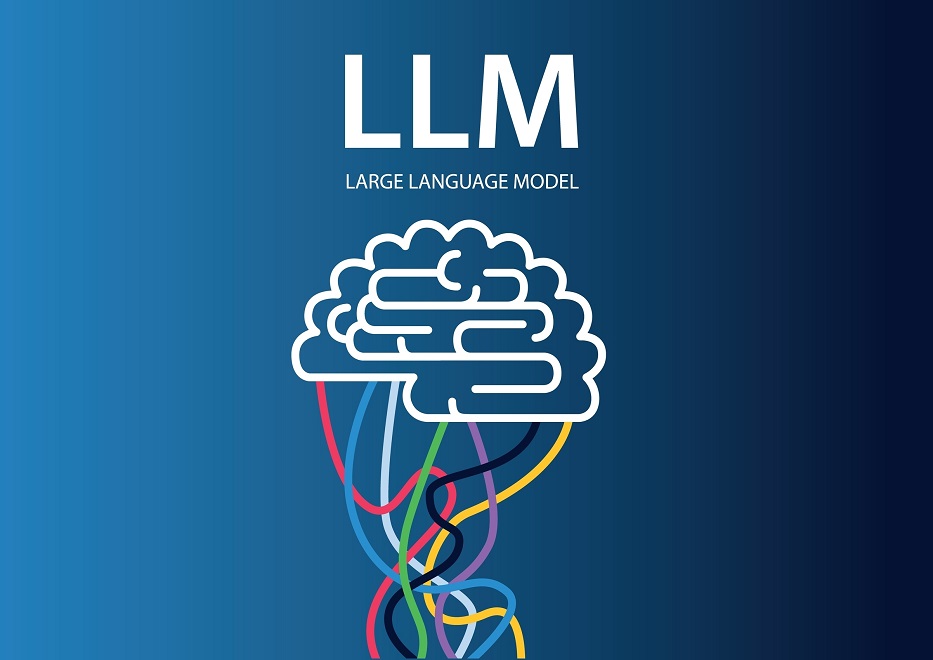Large language models (LLMs) are recent advancements in the AI deep learning space that generate and understand text in a human-like fashion. These large language models are based on the transformer architecture.
Artificial intelligence has made a pivotal impact on various sectors. ChatGpt is a prominent generative AI application built by Open AI. Along with the impressive heights AI is scaling currently, various ethical concerns are cropping up. Therefore, it is imperative to understand why and how LLMs function. A better understanding of large language models is needed as AI is becoming an inevitable part of millions of lives around the world today.
What are Large Language Models (LLMs)?
Large language models are neural networks comprising a number of parameters that help generate outputs for users based on certain key inputs. LLMs, simply explained, are machine learning models that can understand and generate human speech patterns in text form. The Large in this abbreviation means that this neural network is fed and trained on massive datasets.
LLMs are trained and fed trillions of datasets of information from public sources. They are a form of generative AI specifically architected to generate content that is text-based. The language modelling AI tech has witnessed immense progress ever since the crucial invention of transformers by Google. LLMs have come a long way since transformers were introduced, due to which natural language processing has become increasingly effective.
Uses of large language models:
AI is becoming increasingly inevitable for use in daily life. Below are some spaces where large language models are applied.
Retail: LLMs are helpful in building chatbot services for consumers and are particularly profitable for retailers as they don’t have to assign a person to handle service jobs.
Language translations: LLMs can be helpful in translating languages, which is especially productive as a tool for students and expatriates.
Code generation: LLMs trained in programming languages could possibly make the task of coding easier for engineers and reduce workload.
Now that we understand what large language models are, let’s look at the five best LLMs currently.
GPT 4
GPT 4, according to Open AI, follows the research path of its predecessors. Except for this time around, it is highly tuned to producing factual content that is 40% higher in accuracy from user input. Not only this, the new version of GPT 4 also focuses on safety and addressing ethical concerns.
The new model is trained by considering the feedback received from users on the previous models. Also, programmers have committed to updating and improving GPT 4 at regular intervals.
GPT 4 outperforms the previous models with advanced reasoning capabilities and greater problem-solving abilities. Also, it is not exclusively a language-only model.
ChatGLM:
ChatGLM is an open bilingual model based on the General Language Model framework with over 6.2 billion parameters. This LLM is optimized exclusively for Chinese users. This model is trained for 1 trillion tokens of the English language corpus and Chinese Language corpus. ChatGLM was recently launched in March 2023 by Tsinghua University’s Knowledge Engineering Group (KEG) & Data Mining.
LLAMA:
LLAMA (Large Language Model Meta AI) is a large language model released by Meta. With LLAMA, Meta hopes to democratise the field of AI. The tech giant states that many researchers presently do not have access to AI models. Hence, many researchers do not have the infrastructure to study these models.
LLAMA is aimed at increasing the potential of AI by giving access to researchers and enabling them to improve and mitigate issues like toxicity, bias, and the potential for generating misinformation. Currently, access to LLAMA will be granted through Meta on a case-by-case basis for researchers in the AI space.
Palm AI
Google’s Palm is yet another breakthrough in generative AI. This new large language model architecture is called Pathways. With this innovation, Google aims to enable a single AI model to complete all tasks efficiently. To clarify, so far, AI has been directed towards doing one task at a time, and this has led to the creation of multiple instruction models for the completion of various tasks.
Google comments that this AI will handle many tasks at once, will pick up new skills faster, and reflect a better understanding of the world. Palm is modelled as a reflection of how humans interact with real-world problems. For example, if you learn how to cycle today, it is unlikely that you will forget this skill tomorrow.
Most large language models focus on one aspect of a task. However, with Pathways, programmers are focusing on enabling multiple aspects. Pathways integrates multiple models such as auditory, vision, and language generation in the same model. This new AI architecture is being modelled after the human brain which utilizes different regions for doing tasks.
Bloom
Bloom is the largest open-access AI released by the BigScience research project. Bloom stands for ‘BigScience Large Open-science Open-access Multilingual Language Model’. Due to BigScience’s emphasis on transparency, this LLM is a highly accessible model open to research and study for everyone.
With over 1000 researchers from 70+ countries and 250+ institutions, Bloom has gained prominence due to its transparent and open policy of making its products available for research and scrutiny. Through 176 billion parameters and 1.6 terabytes of information, Bloom is able to generate 46 natural languages and is also trained in 13 programming languages.
Large language models are pivotal for processing natural language with minimal human interaction. However, NLP researchers currently find it difficult to have access to these models owing to the large
operation scale of these models. Experts in the tech space are currently aiming to open the borders of AI so that everyone can reap its benefits.
In conclusion, large language models, if properly utilized and improved upon, can deliver highly accurate solutions and be applicable to various industries.
Also read – AI, ChatGPT ‘prompt engineer’ job can fetch a ₹2 crore plus annual salary



